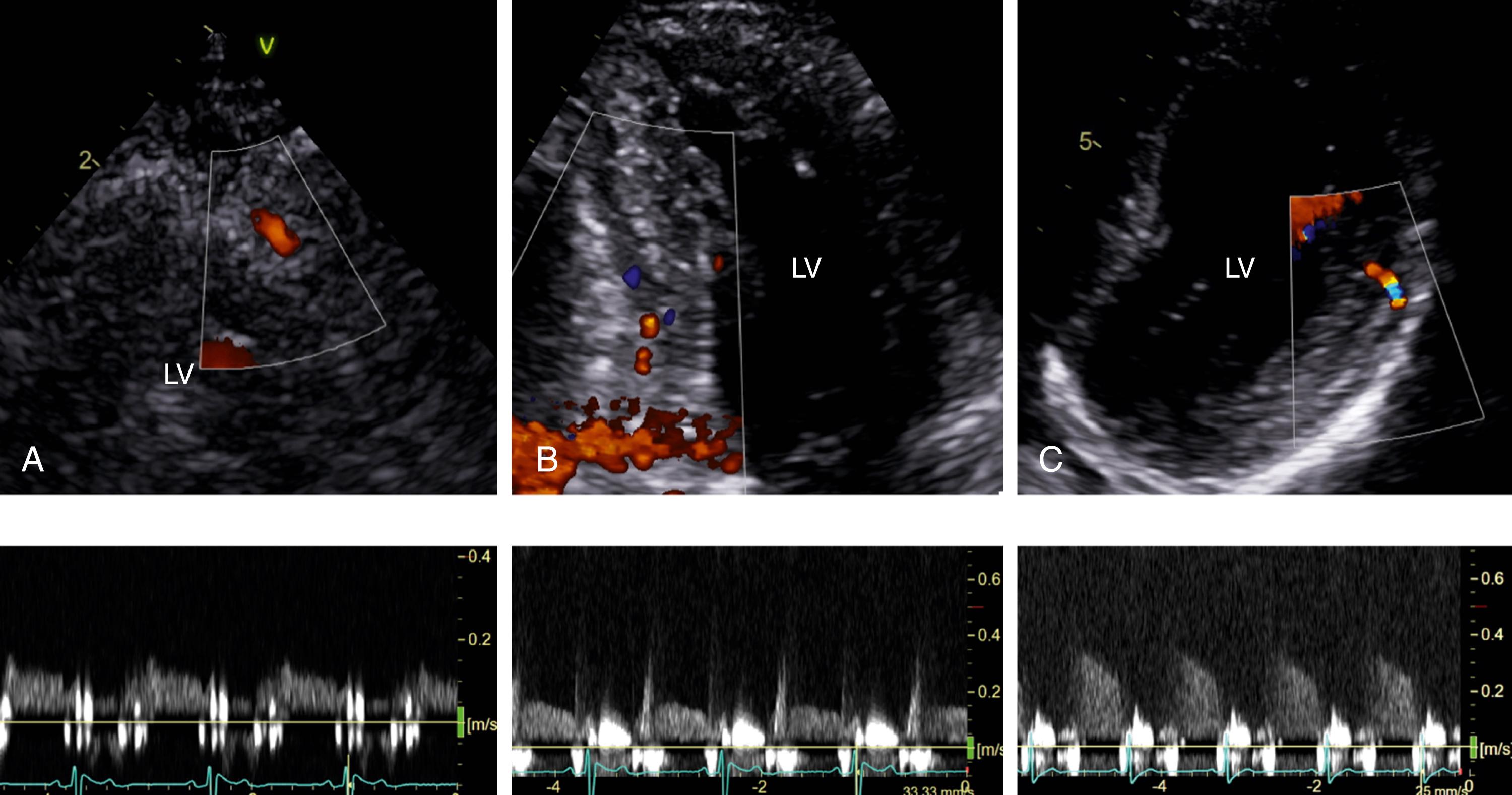Physical Address
304 North Cardinal St.
Dorchester Center, MA 02124
Noninvasive coronary artery imaging has become popular since it was first used to measure coronary flow velocity (CFV) of the proximal left anterior descending coronary artery (LAD) using transesophageal echocardiography in the early 1990s followed by CFV measurements in the distal portion of the LAD using a transthoracic high-frequency transducer in the late 1990s. This was followed by the recording of flow velocity of all three major coronary arteries using a standard transthoracic transducer in the past decade. CFV is characterized by a biphasic flow, a small systolic forward flow, and a predominant diastolic forward flow. Although a specific pattern of systolic coronary flow sometimes provides clinically useful information regarding microvascular obstruction (systolic flow reversal) and the presence of significant coronary stenosis (predominant systolic flow), vigorous contraction of the myocardium during systole usually precludes complete visualization of the CFV envelope throughout one cardiac cycle; thus, its assessment is mainly derived from diastolic CFV, which is the main component of coronary blood flow.
Because the average diastolic CFV ranges from 10 to 20 cm/s, optimal measurement of CFV requires special settings for color and pulsed-wave Doppler echocardiography. Table 48.1 depicts the updated setting recommendations for CFV measurement among different ultrasound manufactures. The detailed method to record CFV has been described elsewhere. , Briefly, the LAD runs in the anterior interventricular groove, whereas the posterior descending coronary artery (PD), the terminal branch of the right coronary artery (RCA), runs in the posterior interventricular groove. Thus, visualization of these anatomical landmarks is the first step for successful recording of the LAD and PD flow. The lower parasternal long-axis view is the best plane to record flow in the middle to distal part of the LAD. The transitional view from the apical four-chamber view to the apical two-chamber view and the oblique short-axis view of the left ventricle are the ideal two-dimensional planes to visualize the PD flow. In some patients, the left circumflex coronary artery (LCX) flow can be recorded in the foreshortened apical four-chamber view. It is important to note that all these ideal views for CFV recoding are off-axis views of standard echocardiography image acquisitions ( Fig. 48.1 ). Assessment of the CFV reserve (CFVR) in the distal LAD or PD (or both) provides reliable information on the presence or absence of proximal stenosis of the corresponding artery. Importantly, normal CFVR in the LCX does not always rule out significant stenosis of the LCX because the recording point is often at the middle portion of the LCX or a branch of the LCX, resulting in the misdiagnosis of stenosis of the middle portion of the LCX.
| Manufacturer | Philips | GE | Siemens | Canon | ||||
|---|---|---|---|---|---|---|---|---|
| Recoding site | LAD | PD and LCX | LAD | PD and LCX | LAD | PD and LCX | LAD | PD and LCX |
| Transducer | S5-1/X5-1 | S5-1/X5-1 | M5(4,3)S | M5(4,3)S | 4Vic | 4V1c | 6S3 | 5S1, 5S2 |
| Color Doppler | ||||||||
| Frequency (MHz) | 2.7/2.6 | 2.7/2.2 | 3.5 | 2.0–2.5 | 3.8 | 2.5–3.3 | ||
| Scale (cm/s) | 15–25 | 15–25 | 20–24 | 20–24 | 12–22 | 12–26 | 11–17 | 11–19 |
| Gain | 80% | 80% | 0 dB | 0 dB | ||||
| Persistence | 2 or 3 | 1 or 2 | 3.6 | 3.6 | 2 | 2 | ||
| Filter a | High or max | High or max | 8/2.8 cm | 8/2.8 cm | 1 | 1 | 5 | 5 |
| MAP | Yellow, cyan, or mosaic | 1 | 1 | 2 | 2 | |||
| Tissue priority | 0 | 0 | 2 | 2 | ||||
| Time smooth | 5 | 3 | ||||||
| Spatial smooth | 4 | 4 | ||||||
| PW Doppler | ||||||||
| Frequency (MHz) | 2.5/2.5 | 2.5/2.5 | 3.5 | 1.75 | 3.8 | 2.5–3.3 | ||
| Sample volume (mm) | 3 | 3–4 | 4 | 4 | 3 | 3–5 | 5 | 5 |
| Gain (% or dB) | 60% | 45% | −10 dB | −10 dB | ||||
| Filter a | Low or min | Low or min | 4.5/2.9 cm | 4.5/4.3 cm | 4 or 5 | 4 or 5 | 150 | 150 |
| Power (MI) | 0.4 | 1.0 | 0.5 | 0.5 | ||||
| Reject | 4 | 3 | 4.5/2.9 cm | 4.5/4.3 cm | ||||
| MAP | Gray 2 | Gray 2 | 3 or 4 | 3 or 4 | 3 | 3 | ||

Video 48.1. Coronary flow recordings. A, Coronary flow in the distal portion of the left anterior descending coronary artery. B, Coronary flow in the posterior descending coronary artery. This is an off-axis two-chamber view. C, Coronary flow in the left circumflex coronary artery. This is an off-axis four-chamber view. LV, Left ventricle.
Become a Clinical Tree membership for Full access and enjoy Unlimited articles
If you are a member. Log in here